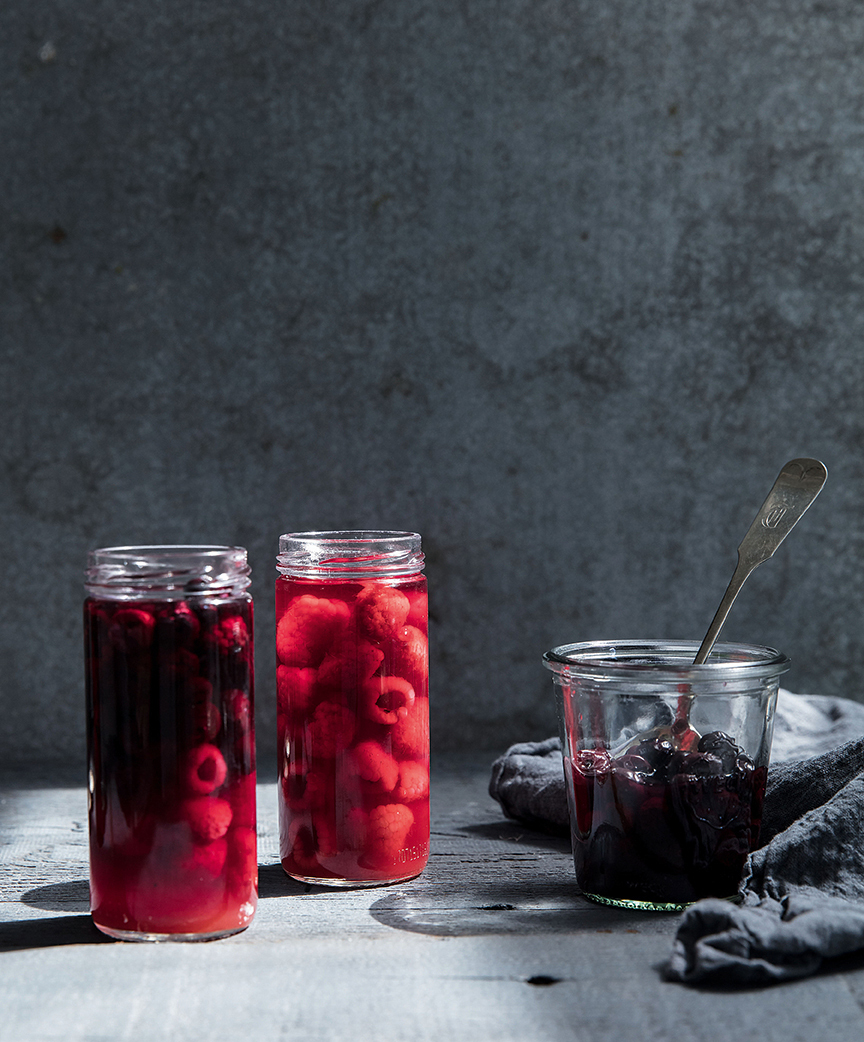Get Premium access to all the latest content online
Subscribe and view full print editions online... Subscribe
Serves Desserts and puddings
When you preserve fruits whole, you have large pieces of fruit suspended in a sugary syrup that you then process in a hot water bath canner – a traditional method where jars are placed in boiling water – to get the lid to seal.
You are not relying on the sugar to get your final preserve to gel, as is the case with jams and marmalades, so you can experiment with different kinds of sugars, such as agave, palm sugar and maple syrup. Honey is a favourite, imparting a nice, mild flavour without darkening the fruit. But other sweeteners have their advantages, too, and it is really just a matter of personal preference.
A good thing about using preserved whole fruits is that you can reserve the liquid for another use and use the fruit as you like. They can also be used in smoothies, in milkshakes or on top of breakfast yoghurt or ice cream. You can use them in baking pies, scones, muffins and other desserts. The liquid can be set aside to add fruity flavour to a dressing or marinade. It can also be added as a syrup to sparkling water for a refreshing drink. The possibilities are endless.
Nearly any fruit can be preserved whole, and there are plenty of clever tricks, depending on their colour or fragility, which will make the finished result more appetising and gorgeous.
It is important that the fruit you have selected for preserving whole is firm; slightly underripe is best. The firm texture helps the fruit stay together when sealing the jars. if your fruit is too ripe, it can become mushy and look unpleasant.
When it comes to preparing the fruit for packing, for small berries, such as blackberries and blueberries, you can pack the fruits in the jar whole. Cherries are small enough that they can be packed whole, too, without removing the pits, if you desire. Larger stone fruits should be carefully sliced so that the fruit fits nicely into the jar you are using, although be mindful, as strawberries tend to shrivel and lose their colour so slice these in half and mix with darker fruits such as blackberries.
Pack your fruits raw into the jars. It is fun to layer them creatively and in a beautiful way. You can add a slice of citrus to the side of the jar, or other herbs or spices to make each jar unique – especially good if you plan to give them as gifts. Be sure to pack them tightly as the fruit will lose its structure during processing and it will float, leaving a lot of liquid in the bottom.
For a heavy syrup, work with a ratio of one part sugar to two parts water; for a lighter syrup, it's one part sugar to ten parts water. You will need around 240ml syrup per 480ml jar. Bring your syrup to the boil. Completely cover the fruits up to the fill line of the jar. It is important to stay near the fill line to ensure a proper seal. The trick to keeping the fruit's structure intact is to not boil the hot water bath canner, but to cook it at 95C – hot enough to sterilise, but not to overcook the fruit. Process the fruits for around 8 minutes for a 240ml jar, 12 minutes for a 480ml jar, and 20 minutes for a 960ml jar. (These times are based on the syrup being poured in piping hot.( hen finished, remove the jars from the canner and tighten the lids. They will look funny when they come out, but beautify themselves when they cool.
Experiment with alternative sweeteners in your syrups. Each will add its own flavour and colour. You can use coconut sugar, local honey, agave or maple syrup, to name just a few.
This recipe was taken from the August/September 2020 issue of Food and Travel.
To subscribe today, click here.

Advertisement
Subscribe and view full print editions online... Subscribe